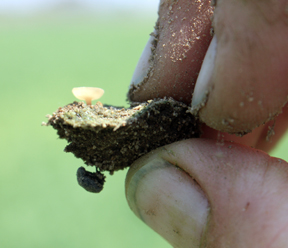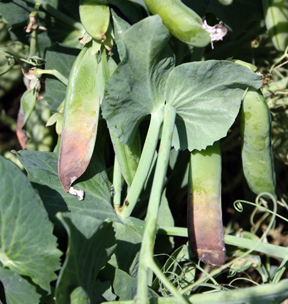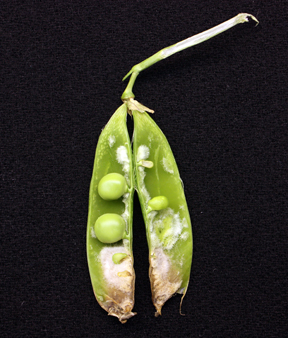Soybeans and peas at risk for white mold
Editor’s note: This article is from the archives of the MSU Crop Advisory Team Alerts. Check the label of any pesticide referenced to ensure your use is included.
Now that flowering has begun and canopies are beginning to close, soybeans will be at risk to white mold. White mold is caused by the fungus Sclerotinia sclerotiorum. The fungus overwinters in crop debris or soil as sclerotia with an appearance similar to mouse droppings. During the growing season, apothecia (small mushrooms) are produced from the sclerotia which have the capacity to release millions of spores into the air (Figure 1). These spores are not thought to infect the plant directly, instead they land on and infect flower petals using them as a food source to initiate infection of the plant. Disease is favored by cool (less than 85ºF) temperatures and moisture. The university of Wisconsin-Madison has an excellent table and website with suggested management practices and further information.
An irrigated pea crop was found last week in central Michigan with a heavy infestation of white mold. The lower canopy had a slimy appearance and on closer inspection areas of white cottony fungal mycelium (a.k.a. white mold) could be found on the crop canopy and apothecia on the soil surface. Pea pods with characteristic water-soaked lesions were also prevalent (Figure 2 & 3).



 Print
Print Email
Email





